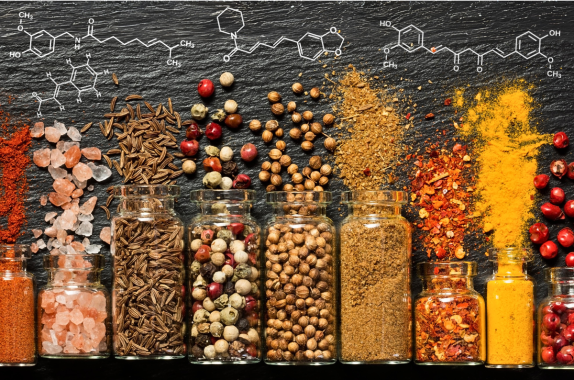Grade Level
All
minutes
15 min - 1 hr
subject
Life Science
stem practices
Planning and Carrying Out Investigations
Activity Type:
kitchen chemistry, Family activity, food science
Head to the nearest mirror and stick your tongue out. See all those bumps? Those are called papillae, and each one houses a collection of specialized cells called taste buds. Taste buds have a very important job: They help you determine which foods are safe to eat, and which aren’t.

How Do We Taste Our Food?
Inside each taste bud are thousands of receptors that detect different tastes. Scientists generally group these into five categories: sweet, salty, bitter, sour, and umami. Foods can have multiple qualities simultaneously. After millions of years of evolution, humans usually associate foods that keep us nourished with pleasurable tastes and foods that taste potentially spoiled or toxic with feelings of disgust or even pain.
Some of the most interesting reactions we have to food are due to transient receptor potential channels (TRP channels). These specialized receptors are responsible for the minty cool of a candy cane or the rush of heat from a bowl of chili. These sensations are different because they can cause humans a bit of immediate discomfort.
Plants make chemicals that activate TRP channels to stop animals from eating them. In some cases, these chemicals can even be toxic in large quantities. So why do people eat them? As they say, “It’s complicated.”
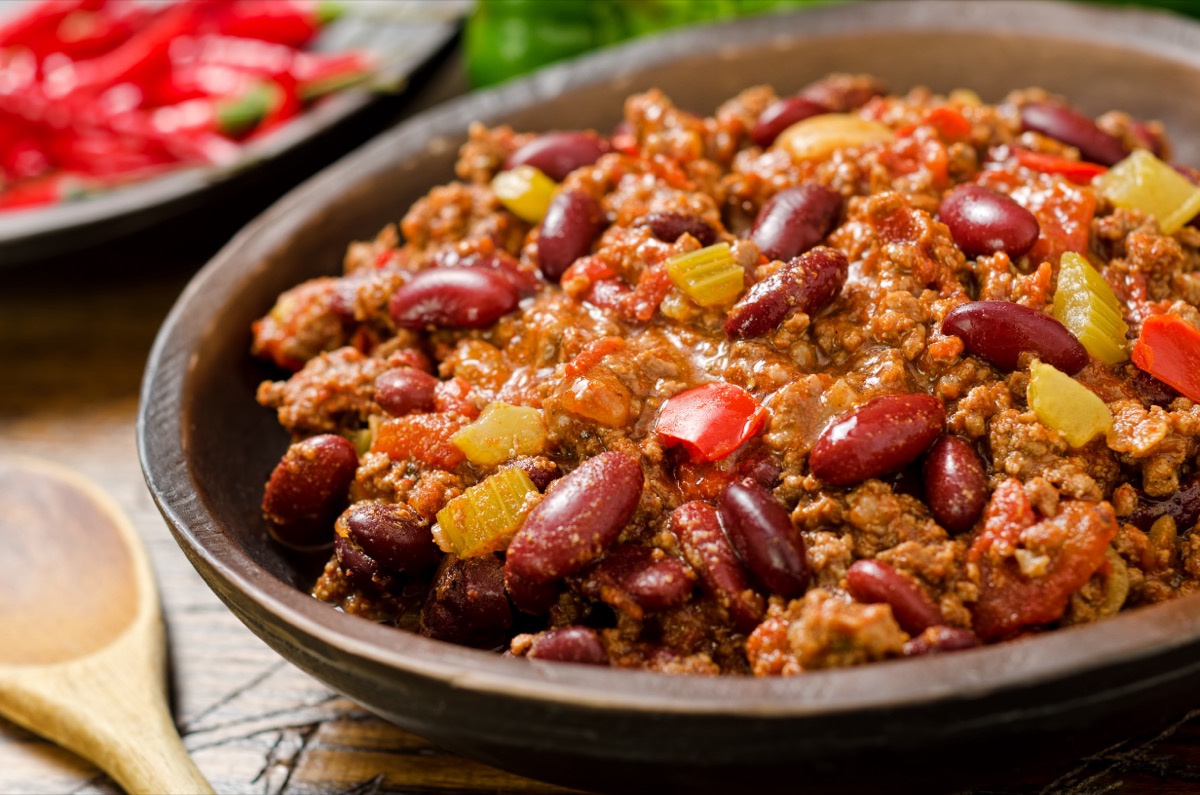
Tasty But Toxic?
Though spicy food is popular worldwide, it actually originated in hot areas near the equator. Chemicals like capsaicin in hot peppers can make you sweat, which allows the body to cool itself. Sweating can be an advantage in hot climates, which may explain a preference for such spices in warmer equatorial regions.
Additionally, the same chemicals that evolved in plants to ward off insects and animals can, in some cases, kill bacteria. Adding certain spices to food may have protected it from spoiling, which may have kept people from getting sick, especially before refrigeration was invented. Humans may have developed a taste for spicy foods as a protective measure.
Luckily, those chemicals are not generally dangerous to humans. As the saying goes, “The dose makes the poison.” You would have to eat a lot of the spice to get sick.
Many spices were also used for medicinal purposes. Over time, they also became treasured parts of cultural traditions or religious ceremonies. But even without such significance, many people simply enjoy the intense sensations and unique flavors in foods and drinks that activate TRP receptors.
Testing Tasty Spices
In this activity, you will make several beverages using spices that activate the TRP receptors in your mouth. For each recipe, take some time to smell and taste each individual spice before combining them.
- How would you describe their properties? Are they hot, smoky, dry, or bitter? Do they make your mouth feel warm or cold?
- How would you group these spices or classify them?
- Would you describe the spices differently once they are combined?
The recipes below have been simplified to use common ingredients found in grocery stores. The process of making each drink has also been streamlined. Each section includes a link to a more traditional recipe with additional details about the beverage if you would like to learn more.
Safety note: Please check the recipes and your ingredients for potential allergens. These activities use the stove. An adult should always be present.
Masala Chai
Originally hailing from India, masala chai simply means “spice tea.” A fragrant blend of black tea, warming spices, and rich whole milk, chai has become wildly popular in the United States. Its spices, such as cinnamon, cloves, and ginger, activate TRP receptors.
For best results, use Assam or Darjeeling tea. The recipe calls for whole milk; if needed, plant-based milk can be substituted, but the result will not be as rich. This preparation makes enough to share with a friend. If you want to experience a traditional Pakistani chai made with whole spices, try Izzah’s version from Tea for Turmeric.
Ingredients:
- 2 cups water
- 2 black tea bags
- 1 cup whole milk
- ½ teaspoon ground cinnamon
- ½ teaspoon ground cardamon
- ½ teaspoon ground ginger
- ¼ teaspoon ground cloves
- ¼ teaspoon black pepper
- 1 tablespoon sugar or honey (optional)
Equipment (for all beverages)
- A small pot
- A measuring cup
- A ladle (optional)
- Metal strainer (optional)
- Whisk and/or milk frother
- Mug
Instructions:
- Place the water and spices in a small pot. Bring to a boil.
- Add the tea and reduce the heat to simmer gently for 5-10 minutes, depending on how strong you want your chai.
- Add milk and sugar (optional). Raise the heat until it boils again. Then, reduce the heat to simmer for another 5 minutes.
- Aerate the chai. Use a ladle or measuring cup to scoop some of the tea and then pour it back into the pot from a height of 1-2 feet.
- Strain or pour the chai into a mug and enjoy.
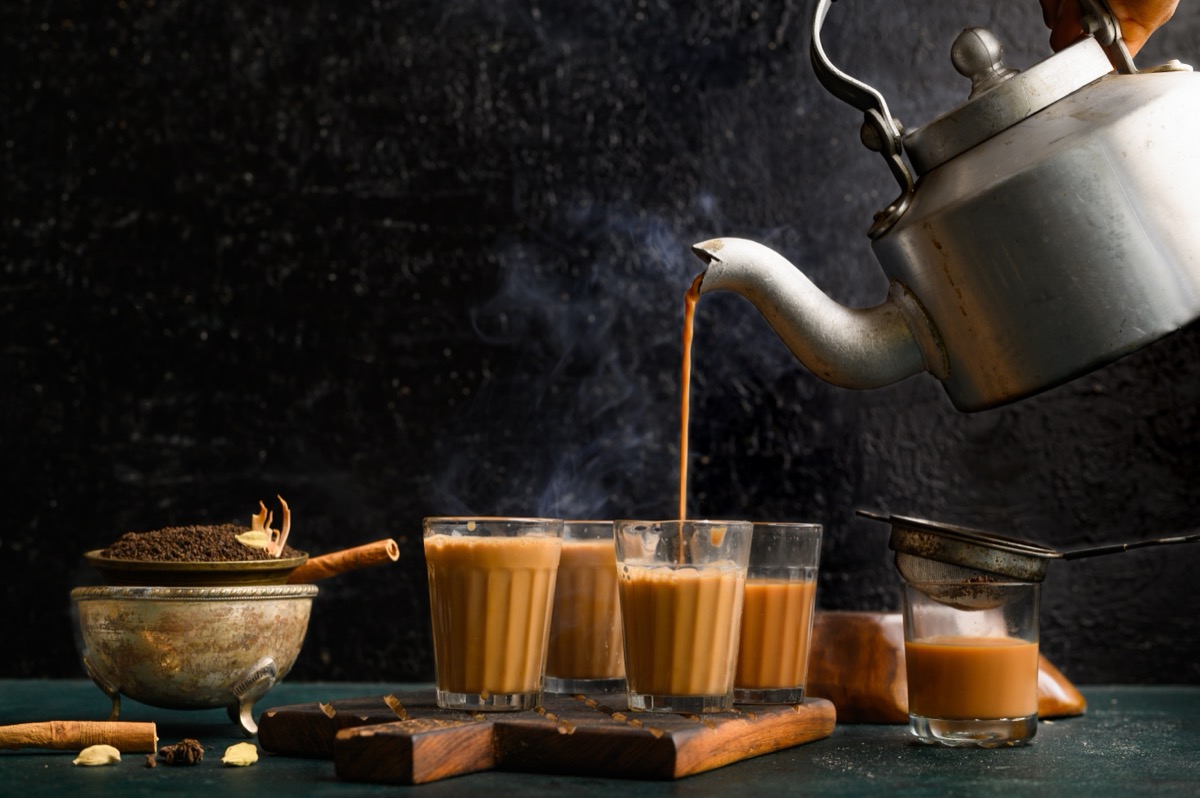
Golden Milk
Haldi doodh, or turmeric milk, is a calming drink often used medicinally in India. Golden Milk is a modern or Westernized version that includes additional spices. Also popular is the Turmeric Latte, a sweet and frothy beverage like this one from Swasthi Shreekanth. Turmeric activates TRP receptors, as do many other spices in this blend. Ghee (a type of clarified butter) or coconut oil may be added to enhance the richness of the beverage and potentially increase the absorption of curcumin, an anti-inflammatory chemical found in turmeric. Note that turmeric can stain, so be sure to clean up any spills quickly.
Ingredients:
- 1 cup whole milk
- ½ teaspoon turmeric powder
- ¼ teaspoon ground cardamom
- ¼ teaspoon ground cinnamon
- ⅛ teaspoon ground ginger
- 1-2 pinches black pepper
- ¼ teaspoon vanilla extract
- 1 tablespoon sugar
- ¼ teaspoon ghee or coconut oil (optional)
Instructions:
- Add milk and spices to a small pot.
- Heat milk until it starts to steam. Do not bring it to a boil. Simmer for 3-5 minutes.
- Add sugar and whisk to incorporate.
- Remove from heat and add vanilla extract and ghee or coconut milk (optional).
- Whisk until foamy. Carefully pour the mixture into a mug, leaving behind any spices that settle to the bottom.
- If using a milk frother, strain the mixture first, then froth.
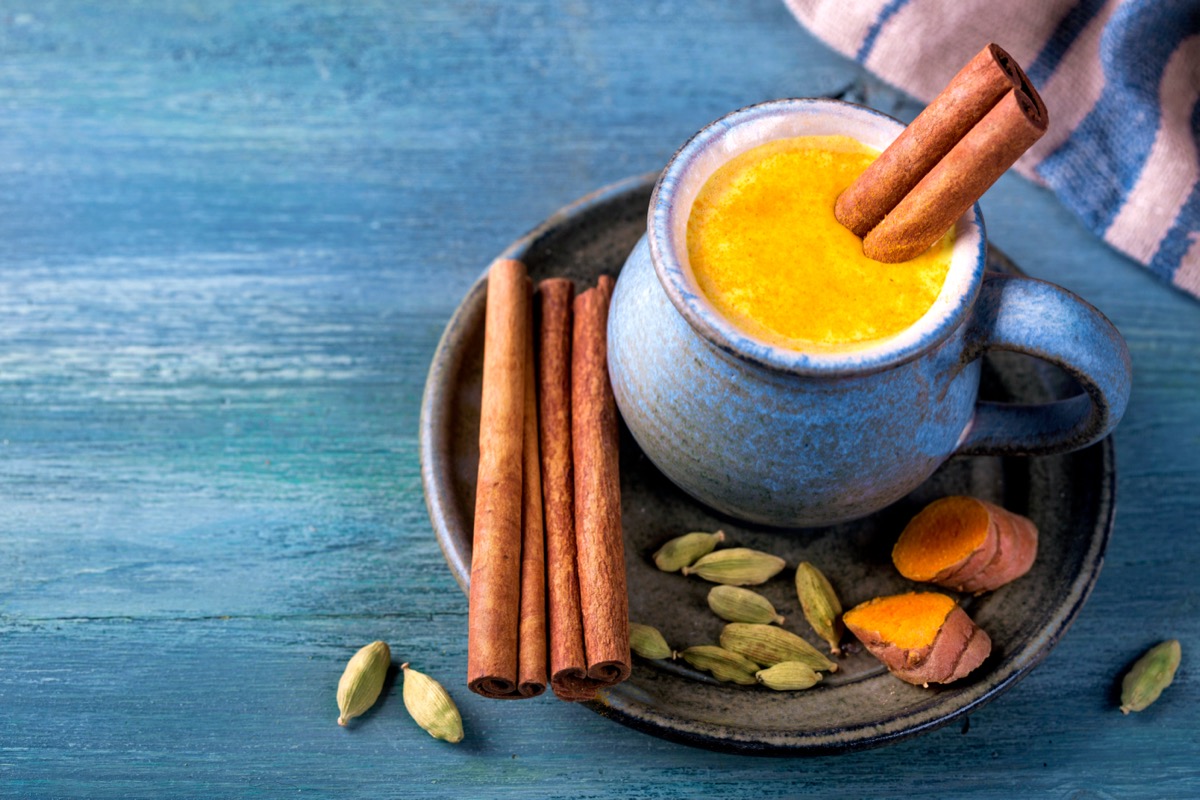
Mexican Hot Chocolate
Mexican hot chocolate is a drink that dates back thousands of years. The seeds of the cacao tree, which are used to make chocolate, were highly prized by ancient people. A beverage of ground cacao seeds and water was used medicinally and ceremonially by the Aztec and Mayan people.
Today, the modern version is usually made with “tablets” of Mexican Chocolate, which contains cocoa paste, unrefined brown sugar, and spices such as cinnamon. (Popular brands include Ibarra and Abuelita.) The Mexican-American version below uses cocoa powder, which is easier to find in many grocery stores, but the texture will be different than one made with tablets. If you have bittersweet chocolate on hand, reduce the amount of cocoa and sugar by 1 tablespoon each, and add one ounce of chocolate.
Ingredients:
- 2 cups milk
- 3 tablespoons unsweetened cocoa powder
- 3 tablespoons sugar
- 2 teaspoon
- ½ teaspoon ground cinnamon
- ⅛ teaspoon cayenne (optional)
- ¼ teaspoon vanilla extract
Instructions:
- Add all ingredients except the vanilla to the pot.
- Heat over medium heat until the milk steams. Do not boil.
- Simmer for 3-5 minutes, whisking to incorporate the cocoa powder.
- Remove from heat and add the vanilla extract.
- Divide into two cups and serve.
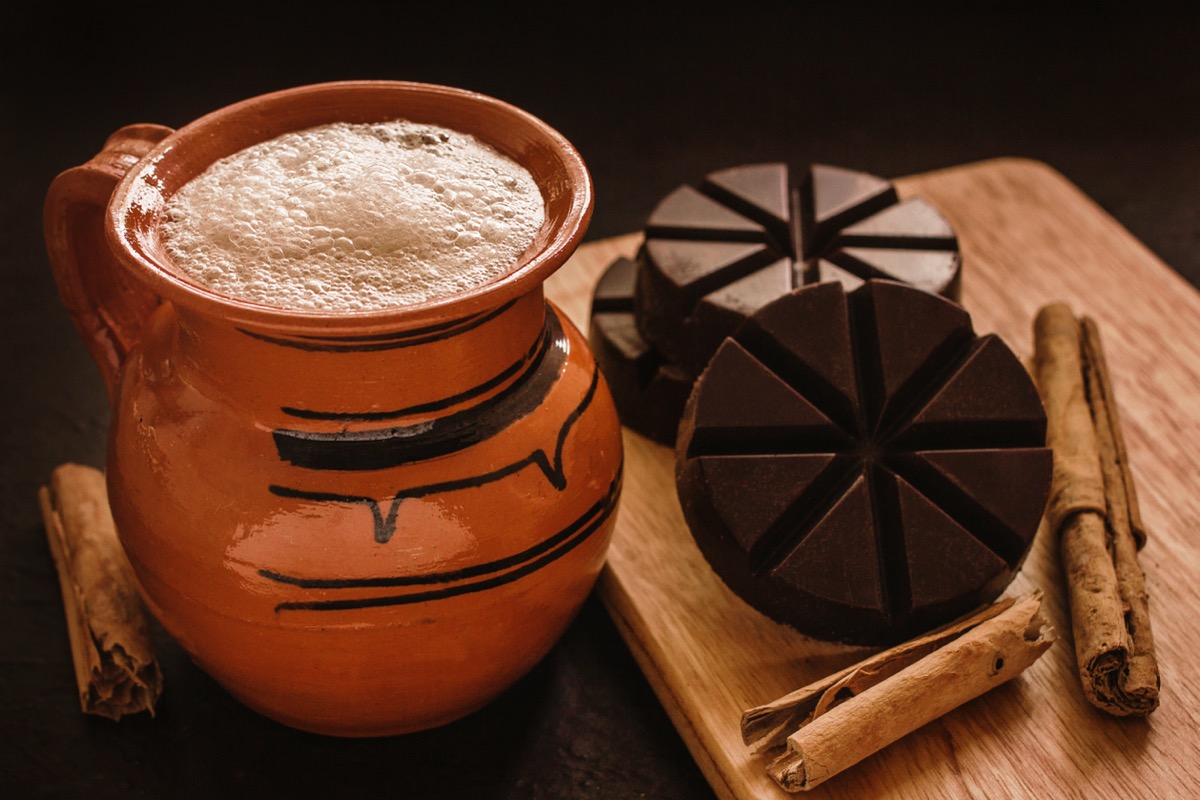
Create Your Own
Now that you’ve made some sample recipes, it’s time to make your own tasty beverage.
- What spices did you like best? Which did you like least? Why?
- How can you adjust the recipes to give you the experience you want?
- What spices would you add to your beverage? How do you think it will change it?
If you look around your kitchen pantry, you may find many spices and herbs that stimulate TRP receptors. Here’s a list of some of the most common. What recipes can you think of that use these tasty ingredients?
| allspice | anise | basil |
| bay leaf | black pepper | cassia |
| cayenne pepper | celery seed | chervil |
| chili | cilantro | cinnamon |
| clove | coriander | cumin |
| curry leaf | dill | fenugreek |
| galangal | garlic | ginger |
| horseradish | lemongrass | lemon zest |
| mace | mint | mustard seed |
| nutmeg | onion | olive oil |
| oregano | paprika | parsley |
| poppy seed | red pepper flakes | sage |
| saffron | sesame seed | tarragon |
| thyme | turmeric | vanilla |
Credit: From the book Most Delicious Poison: The Story of Nature’s Toxins—From Spices to Vices.
Be sure to share what you make with Science Friday. Send us an email at educate@sciencefriday.com or tag us on social media at @SciFri.
Keep Learning
Learn more about TRP receptors and the spicy foods we eat with these resources:
- Listen to the story, How Poisons Have Shaped Life On Earth.
- Read the book Most Delicious Poison: The Story of Nature’s Toxins—From Spices to Vices.
- Learn more about capsaicin and the hottest peppers in the world.
- Want to calm the effects of spicy food? Experiment with ways to cool your mouth.
- Your olfactory senses—your sense of smell—can play a big part in what you taste. Learn more and make your own scent.
- What you taste may be affected by what you see as well. Try this quick experiment to see if your senses are fooled.
Credits
Lesson by Sandy Roberts
Copyediting by Lois Parshley
Digital Production by Sandy Roberts
Meet the Writer
About Sandy Roberts
Sandy Roberts is Science Friday’s Education Program Manager, where she creates learning resources and experiences to advance STEM equity in all learning environments. Lately, she’s been playing with origami circuits and trying to perfect a gluten-free sourdough recipe.
